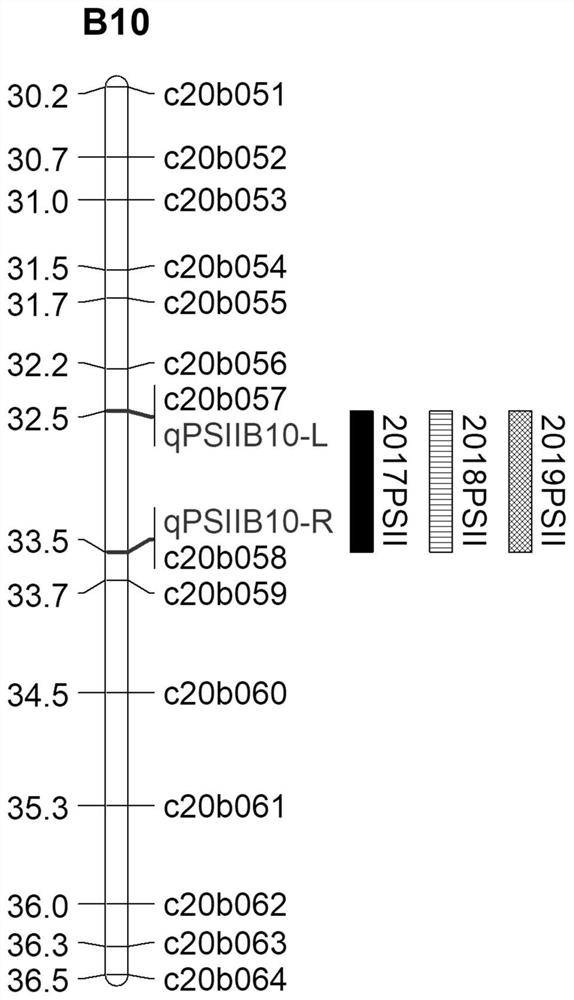Molecular SNP markers linked to qpsiib10, the main QTL locus for peanut resistance to Aspergillus flavus infection, and their applications
A molecular marker, the technology of Aspergillus flavus, which is applied in the determination/inspection of microorganisms, recombinant DNA technology, biochemical equipment and methods, etc., can solve the problems of the small number of major QTLs, the application of difficult-to-flower breeding varieties, etc., to improve the breeding efficiency Effect
- Summary
- Abstract
- Description
- Claims
- Application Information
AI Technical Summary
Problems solved by technology
Method used
Image
Examples
Embodiment 1
[0040] Test materials: The peanut variety Zhonghua 16 was used as the female parent, and the peanut germplasm J11 was used as the male parent for crossing, and a recombinant inbred line (RIL) population F containing 200 lines was obtained by single seed transmission method 7(2017), F 8 (2018) and F 9 (2019).
[0041] Phenotype identification: Planting Zhonghua 16, J11 and F 7 (2017), F 8 (2018) and F 9 (2019) Generation of 200 strains from the RIL population. A completely randomized block experimental design was adopted, with 3 repetitions. Plant 1 row of 10-12 plants per material for each repetition, with a row spacing of 30 cm and a plant spacing of 10 cm. Adopt standard field management practices. When ripe, healthy plants are selected to harvest pods, dried and stored properly. After shelling, 20 typical seed kernels were selected to inoculate Aspergillus flavus indoors, and the infection level of each seed was recorded after the onset was sufficient: Level 0, no A...
Embodiment 2
[0047] The 200 RILs of Zhonghua 16 and J11 (see Example 1) were detected using two SNP markers linked to the main locus qPSIIB10 for resistance to Aspergillus flavus infection. Using genomic DNA as a template and the sequences shown in SEQ ID NO.3-4 and SEQ ID NO.5-6 as primers, two molecular markers were simultaneously amplified using the KAPA2G Fast Multiplex Mix kit. PCR conditions were: 95°C pre-denaturation for 3 minutes; 95°C denaturation for 15 s, 55°C renaturation for 30 s, 72°C extension for 30 s, a total of 30 cycles; finally 72°C extension for 5 min, 4°C incubation. After the amplification product was added with a sequencing adapter, the Illumina HiSeq platform was used for Paired-end 150bp (PE150) sequencing, and the sequencing sequence was compared to the reference sequence to detect the base of the SNP site. If the bases of the RIL and the SNP sites detected in the amplified fragment of Zhonghua 16 are consistent, it indicates that the strain contains the allele ...
PUM
 Login to View More
Login to View More Abstract
Description
Claims
Application Information
 Login to View More
Login to View More - Generate Ideas
- Intellectual Property
- Life Sciences
- Materials
- Tech Scout
- Unparalleled Data Quality
- Higher Quality Content
- 60% Fewer Hallucinations
Browse by: Latest US Patents, China's latest patents, Technical Efficacy Thesaurus, Application Domain, Technology Topic, Popular Technical Reports.
© 2025 PatSnap. All rights reserved.Legal|Privacy policy|Modern Slavery Act Transparency Statement|Sitemap|About US| Contact US: help@patsnap.com



